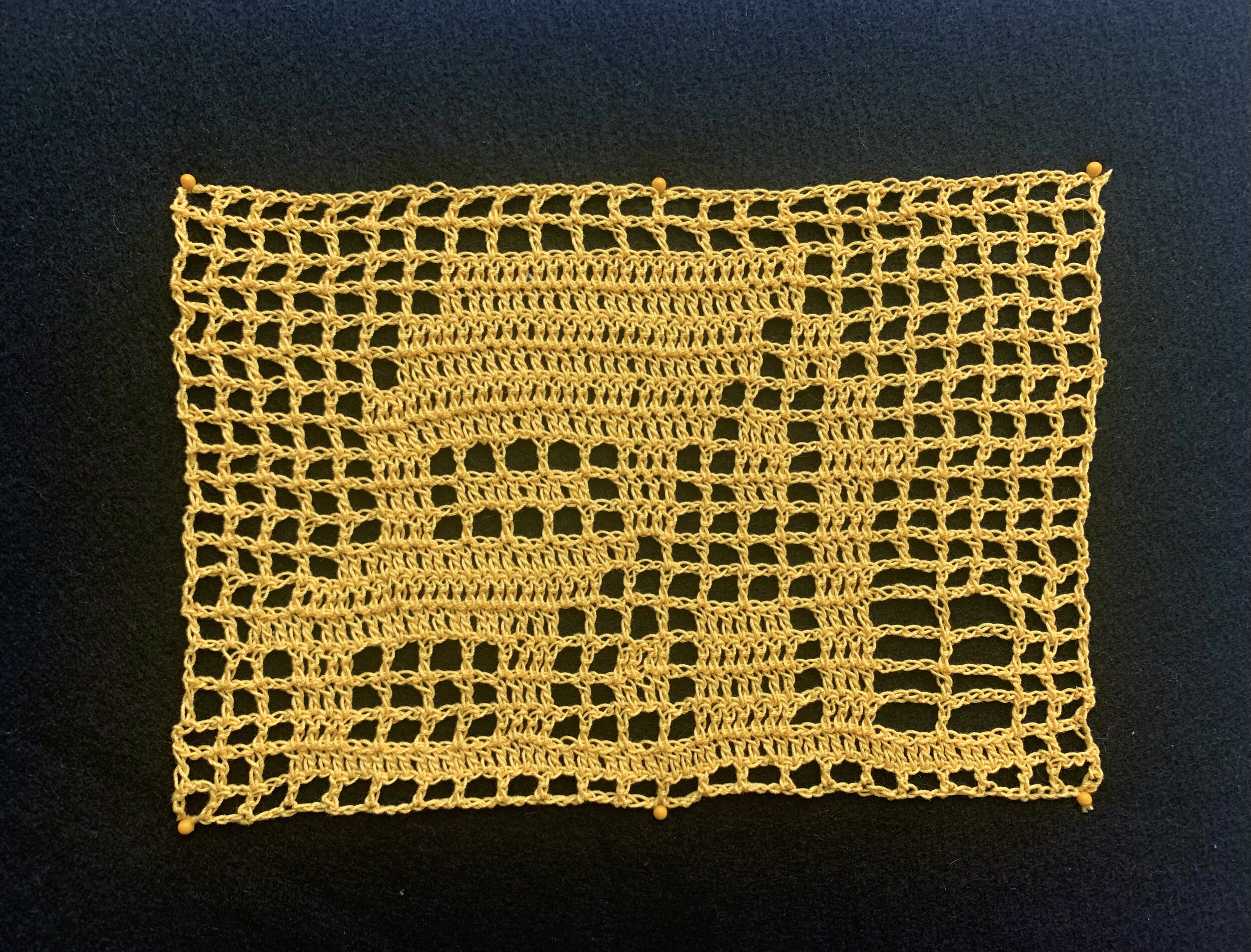My family home has always had markers of my mother’s crafts. Whether it was crocheted blankets or an angel Christmas tree topper made out of starched yarn, every nook and cranny was filled with something handmade. As items came and went, one piece stayed constant: a crochet filet doily with ‘Ballard’ stitched into the design. This framed crochet piece hung on our living room wall for more than a decade. My mom even created similar pieces for other family members with their respective surnames. She utilized filet crochet to weave a pattern of open spaces and solid squares that, when viewed as a whole, depicted a graphed design. This doily now lives in my father’s living room, still a part of the family.
I wanted to use this technique but explore the symbols and themes that I often gravitate towards. I completed a smaller study just to get my bearings of the process and then moved to a larger study with more intricate imagery. Study #1 depicts a simple flower motif and Study #2 aims to translate my oh so familiar house image to filet crochet.
Study #1 Filet Crochet - 6.5” x 6”
Study #2 Filet Crochet - 10” x 7”
This study gave me a better understanding of the filet crochet process, and I see larger projects already worth exploring. In my mind, I see a large, tapestry-esque piece utilizing filet crochet to depict either a scene or multiple vignettes with the themes I work with. Overall, a fun experience and I’m glad I have a bit more insight into my mom’s crafting projects from decades ago!



